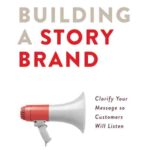When it comes to content marketing, there are three content marketing goals every business should consider; attracting new customers, retaining existing customers, and building brand authority. There are also three broad content marketing types businesses should consider; inbound, addictive, and tentpole. Businesses need to understand how their goals and the marketing types can work together to achieve effective business strategies.
A few years ago, YouTube published a research paper proposing that companies that established the strongest brands on social media did so by publishing three different types of content. The paper focused on video content and the terms were a bit confusing but the underlining premise of much of the report was sound.
Content Marketing Types.
To see how your content marketing goals and the marketing types need to work together, let’s start with a discussion of the three content marketing types.
Inbound Content
Once you know the customer segment you want to reach you have to try to understand their intent. More specifically, what are they searching for? Unfortunately, as we stated in Will You Fail Because You Don’t Know What You Don’t Know, many customers are ignorant of your industry and as such have difficulty selecting the right words in constructing a proper search query or completely ask the wrong questions based on wrong or incomplete information.
With an inbound content marketing type, you have to figure out alternative search queries and even try to anticipate improper questions.
For example, many of my clients have no idea what a registered agent is or what they do when they create a new entity for their business. Most don’t even ask. If as part of your inbound content marketing strategy you targeted keywords to educate prospects about what a registered entity is and what they do, you would miss a vast number of prospects that would gain value from the knowledge but never asked. Therefore, as part of the inbound marketing strategy, you would need to create content with a title like, “How to register an entity” or “What you need to know before you register an entity.” This is because the prospect would likely be including “register an entity” in their search query and not “registered agent.” Once the prospect is captured through Search Engine Optimization (SEO) and lands on your page you can describe what a registered agent is and why it is important.
Therefore, when it comes to inbound marketing, it is all about anticipating the customer’s entry points and then targeting long-tail keywords in the title and content and following good search engine design principles.
The problem with an inbound marketing strategy alone is that once the prospect finds the answer they came for, they often leave your site. Therefore, you need to give them a reason to stay or explore further. This leads us to the next strategy:
Addictive Content
Once a prospect lands on your site, you want them to stay and explore or come back later for another dose. Therefore, you must encourage them to subscribe to your future content or provide content that makes them what to click through and discover more of your content through links and teasers.
Typically, you create an addictive content marketing strategy through regularly scheduled content that gives a prospect a reason to come back for the next content installment. By developing content with a strong editorial voice and an identifiable personality, prospects will be encouraged to sign up to mailing lists or become subscribers so they are alerted whenever you publish new content.
Tentpole Content
Once you have had a chance to build a following of loyal fans, you may want to build buzz to promote an upcoming program or release in an attempt to use your current audience to leverage an even broader audience and extract even larger financial commitments from them. The term “tentpole” is a marketing tactic that gets its name from the shape of the activity leading up to an event.

When you create a program or have a new product release, they are usually costly and time-specific such as a live streaming program or a new release of a book. For these events to pay off, you want to make sure you can extract the greatest value from the event. As you get closer to the date of the event, you will want to build up the frequency of your marketing buzz to generate more and more excitement as you are getting closer to the date.
Moreover, after an event or release, you will want to produce post-event content to maximize your returns. For example, immediately after an event/release, you will want to capture post-event comments and encourage discussions among the participants. Finally, you will want to consider repurposing the content of the event/release into other products. For example, if the event is a live seminar, perhaps, you may want to produce an audio podcast of the event. If the event is a book release, you may what to create a few white papers that describe specific topics covered in the book.
Content Marketing Goals
With a basic understanding of the three content marketing types next I’d like to look at three content marketing goals before we tie them together to see how some marketing types serve your goals better than others.
Engaging in content marketing to achieve your SEO results is a common business goal, but it’s not the only goal content marketing can accomplish. Here are three primary content marketing goals to consider:
Customer Attraction – SEO
Creating content that attracts search engine traffic depends on using targeted long-tail keywords, creating good headlines that invite click-throughs, and delivering content that conforms to Google’s search rules. If your primary goal is new customer attraction with SEO, your content focus is to create content that is popular and therefore gets high traffic volumes.
Customer Retention
A second content marketing goal has nothing to do with attracting prospects but entails serving your current customer’s needs as a way to provide a quality customer service experience so that existing customers remain loyal to your brand.
For example, you might have a frequently asked question (FAQ) section that answers commonly asked questions. Or perhaps, you might host a user forum so that your users can be engaged with other users. Or, you might provide a series of how-to videos to help customers make the most of what you offer.
Authority
A third content management goal focuses on proving that you are a thought leader in your industry and are worthy of their attention. Often when authority is the goal, as is the case with my blog, the content may not rank very well with search engines because the content is focused on conveying less common information and may be pushing the boundaries of common understanding.
As a business with a goal of establishing authority, much of your content tends to be more advanced and covers content areas that are not in the zeitgeist. Therefore, there is less search traffic for your content keeping the overall site from ranking really well but perhaps having landing pages ranking high for smaller niche keywords.
For example, several of my specific posts rank high for specific long-tail keywords like; “Leverage Contingency,” “Thick Markets,” “Self-Weeding Gardens” and many other very important topics for the business owner to understand. However, since these topics are not concepts or as common as search terms like “Business Loans” or Business Entity” site-level SEO can suffer when your content marketing goal is to create brand authority.
Tying Together Content Marketing Goals and Types to Define Strategies
Now let’s tie together content marketing types with your goals.

So, we have three content marketing goals and three content marketing types to serve our goals. ln the chart, we can see how these combinations work together to create nine possible content marketing strategies.
The yellow highlighted blocks indicate that the content marketing type and the content marketing goal are aligned. The unhighlighted blocks show a disconnect between the marketing type and the goal.
Looking across the first row, you can see that if your goal is to drive organic traffic to your site through SEO, the focus would be on investing primarily in inbound content marketing. You would want to make sure that your content made use of long-tail keywords that you can rank for and are relevant to your brand.
An addictive content marketing type might also be somewhat useful to this goal but to a lesser extent. Furthermore, you would probably never invest in a tentpole content marketing type since you have yet to gain the number of followers or established yourself as an authority to make that content type effective.
If your goal is to strengthen the relationship with existing customers and build a reputation for superior customer service, inbound and additive content marketing types are your best strategies.
Finally, if you want to establish your business as a thought leader in your industry, it requires that you be a bit more controversial and less mainstream. Since being a thought leader means being in front of popular trends and exploring niche concepts that are not yet popular, optimizing your content to attract organic traffic should not be your number one priority. However, creating content that makes a prospect think in new ways should be a priority.
Moreover, once you get recognition for your authority, you can take your audience to the next level by employing a tentpole content marketing type.
How will you use your knowledge or content marketing types and your goals to define your content marketing strategy?












